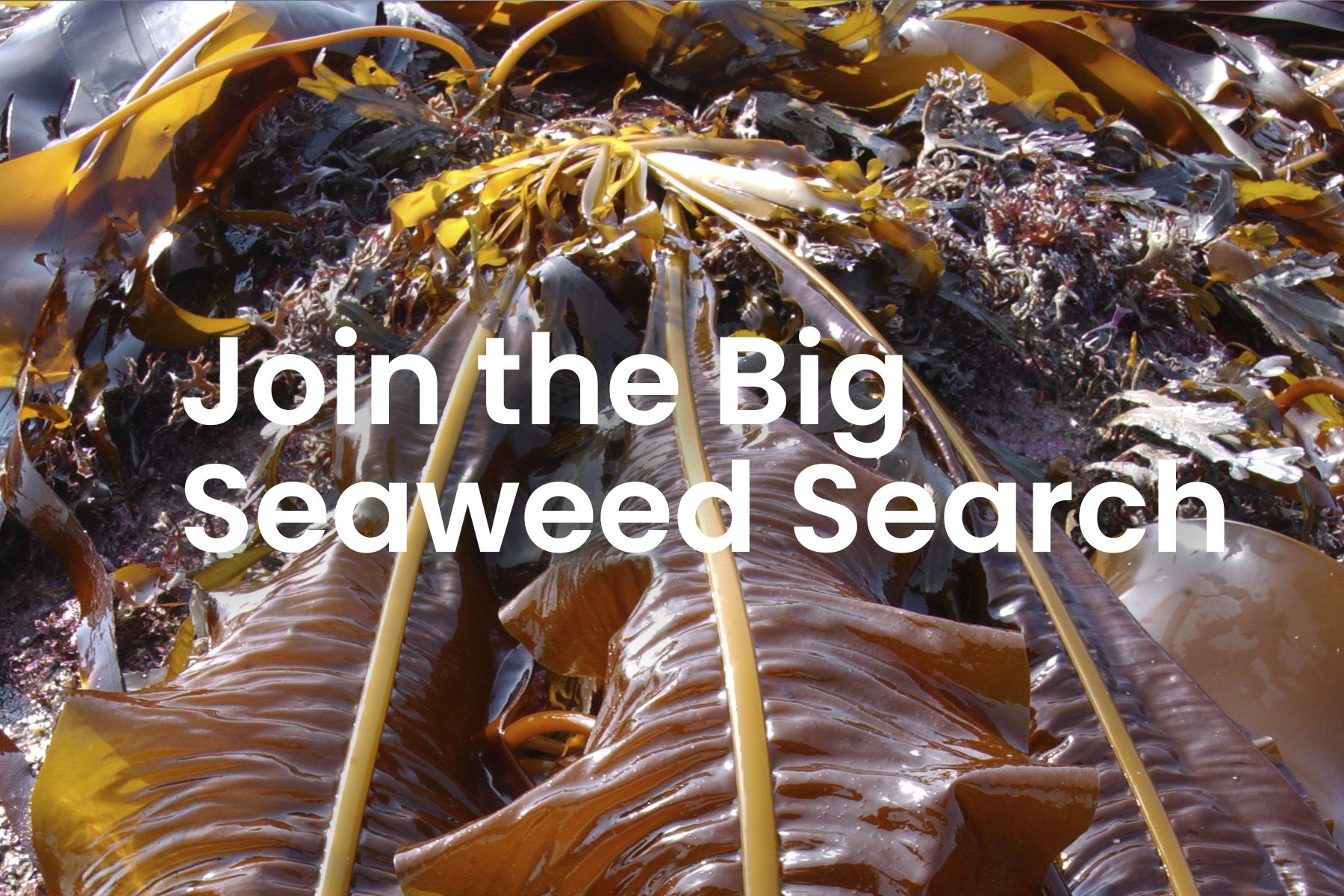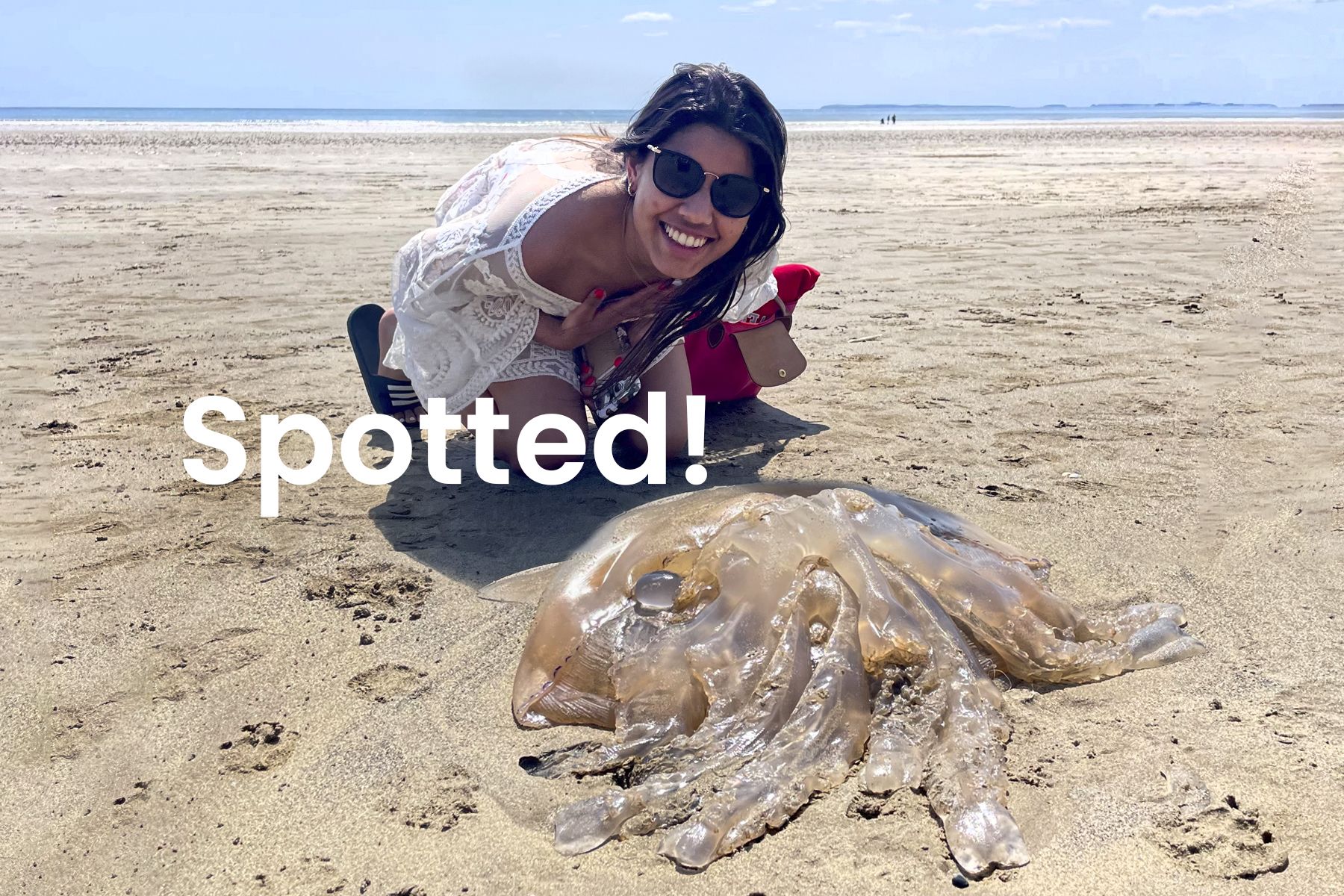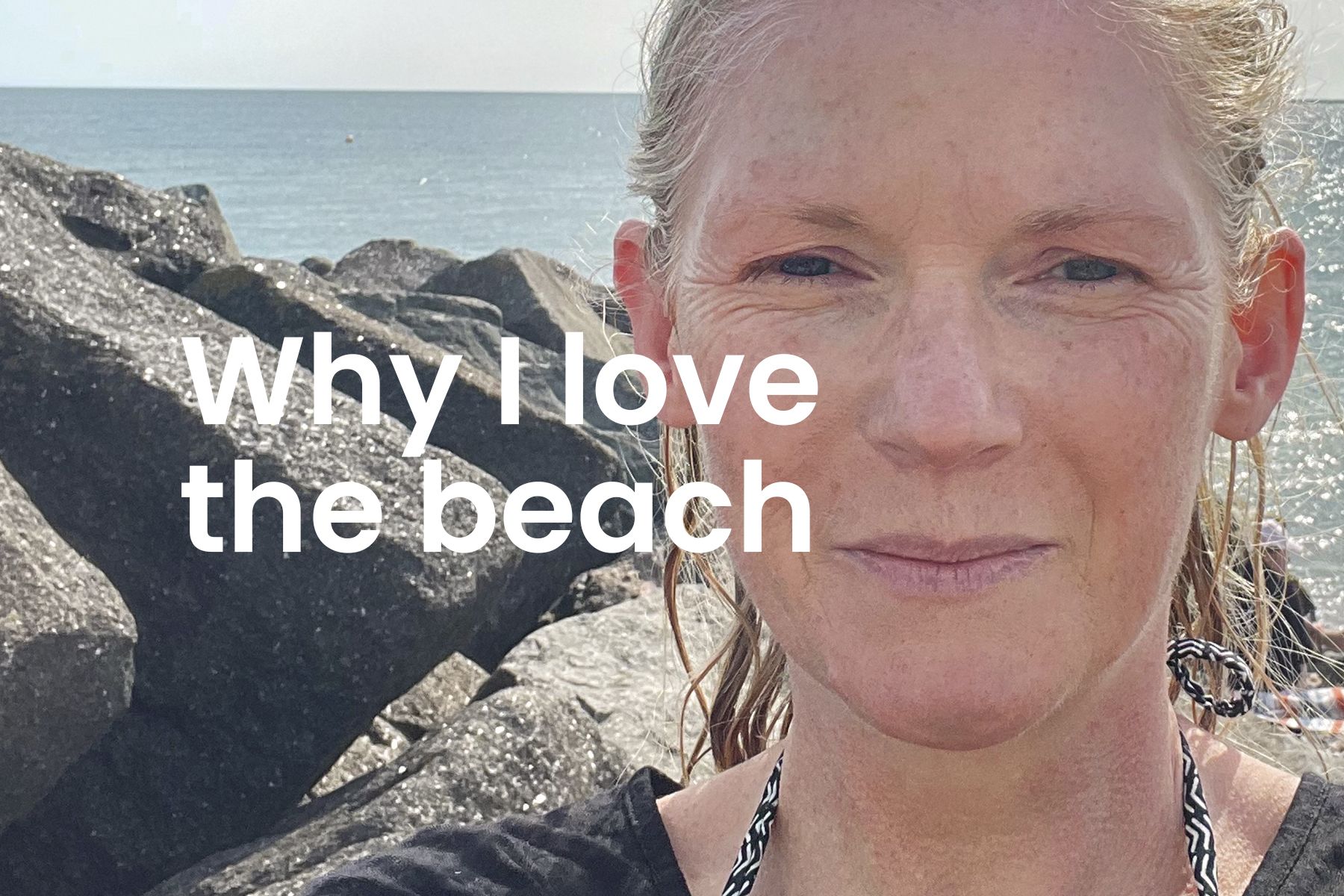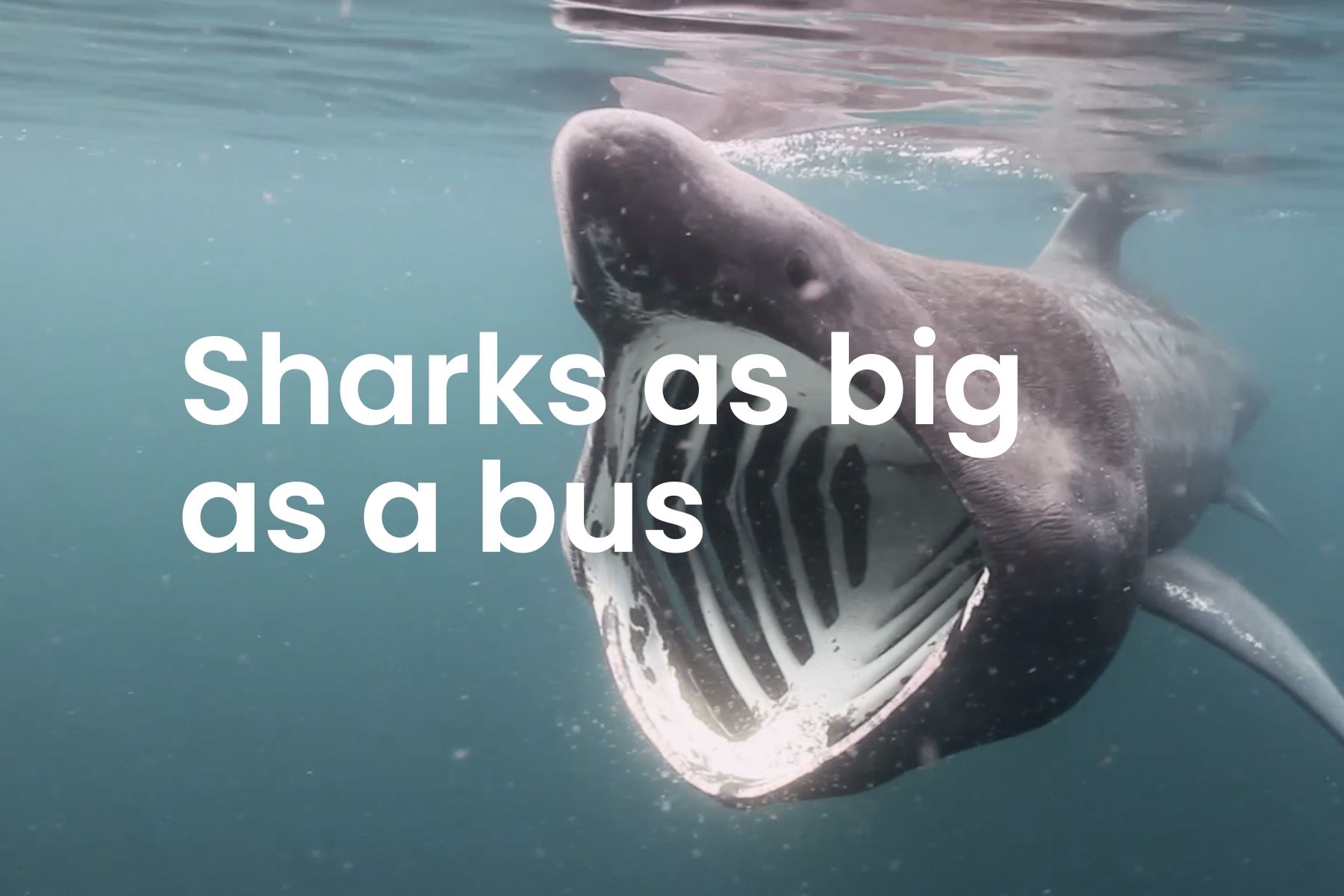
The best UK beaches for…
Our island nation is home to some amazing beaches along its varied coastline. Each one has its own special quality, whether that’s the best place for snorkelling or fossil hunting. Travel writer Jane Anderson picks a few favourites to visit this summer


The best
UK beaches for…
Our island nation is home to some amazing beaches along its varied coastline. Each one has its own special quality, whether that’s the best place for snorkelling or fossil hunting. Travel writer Jane Anderson picks a few favourites to visit this summer
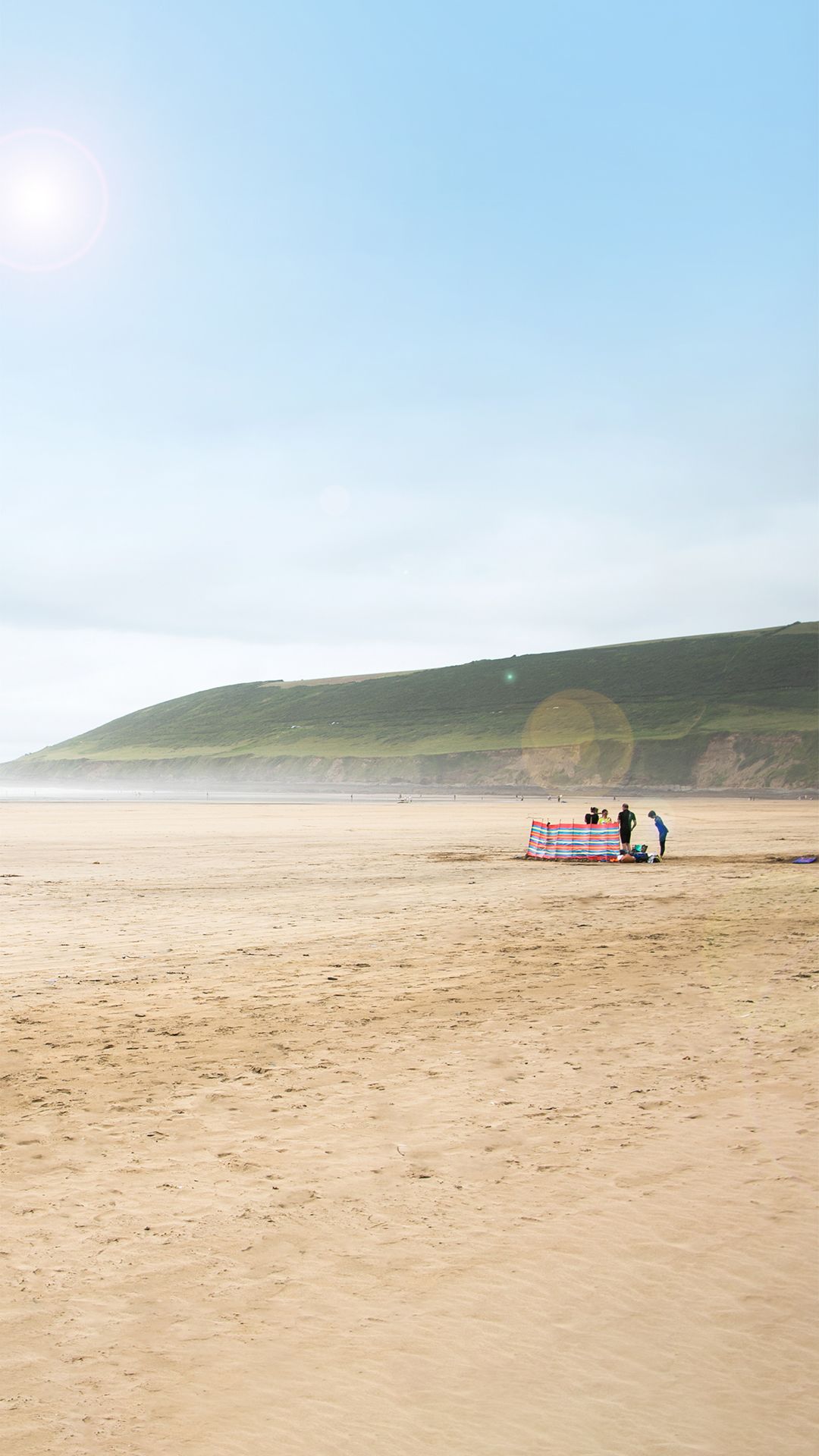
Best beach for
Snorkelling
Coldingham Bay, Berwickshire
The south-east coast of Scotland may not immediately spring to mind when you think of snorkelling, but the clear waters of Coldingham Bay, within the Berwickshire Marine Reserve, are home to incredible marine life such as flounder, dabs, sea scorpions, beadlet anemones, sand eels, lobsters, velvet swimming crabs, wrasse and cross jellyfish.
Genine Keogh, who is also a volunteer snorkeller with our Seasearch programme, runs guided experiences at the bay, with marine education at the forefront. Family friendly ‘snorkpooling’ sessions are specifically geared for parents with children under 10. “Under the water, the environment is beautiful, with sandy areas and a jungle of dense kelp forest and seaweeds, providing a vital habitat for shelter and food for many juvenile fish, as well as larger fish like the beautifully coloured, tropical-looking ballan wrasse and corkwing wrasse, which build their nests in the shallow water,” says Genine.
Find out more about being a volunteer snorkeller or diver with Seasearch, collecting information on species and habitats.
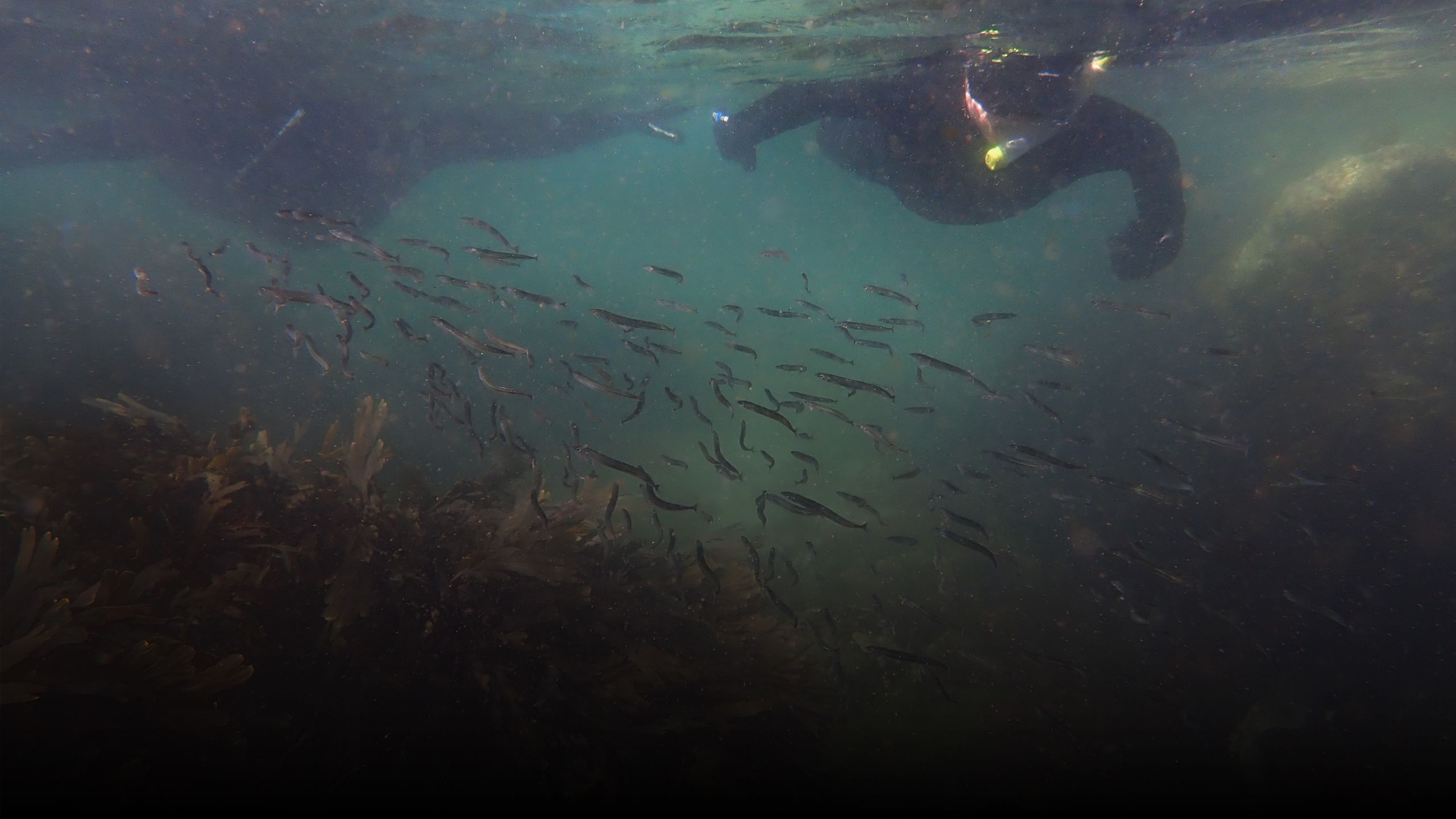

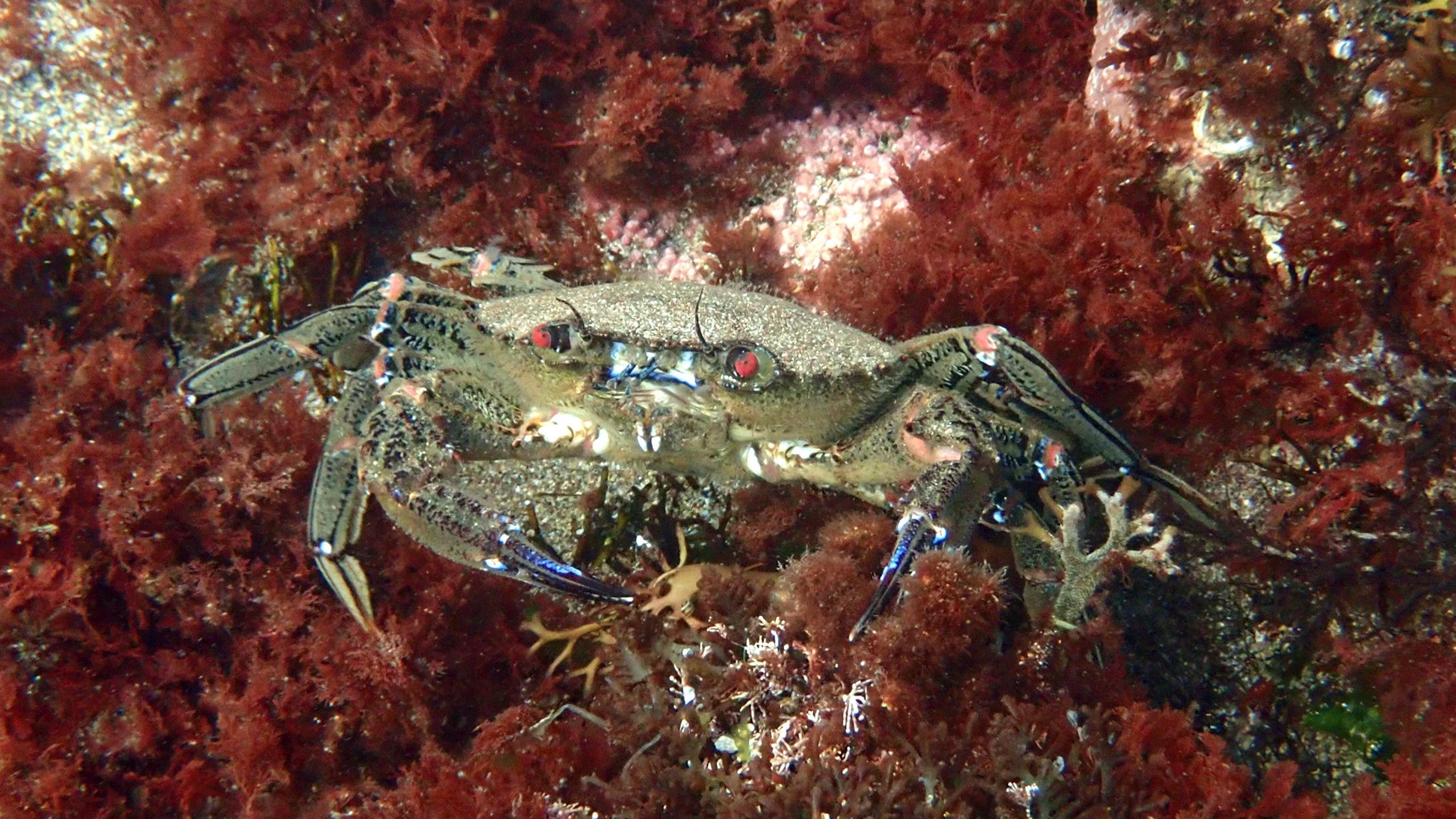
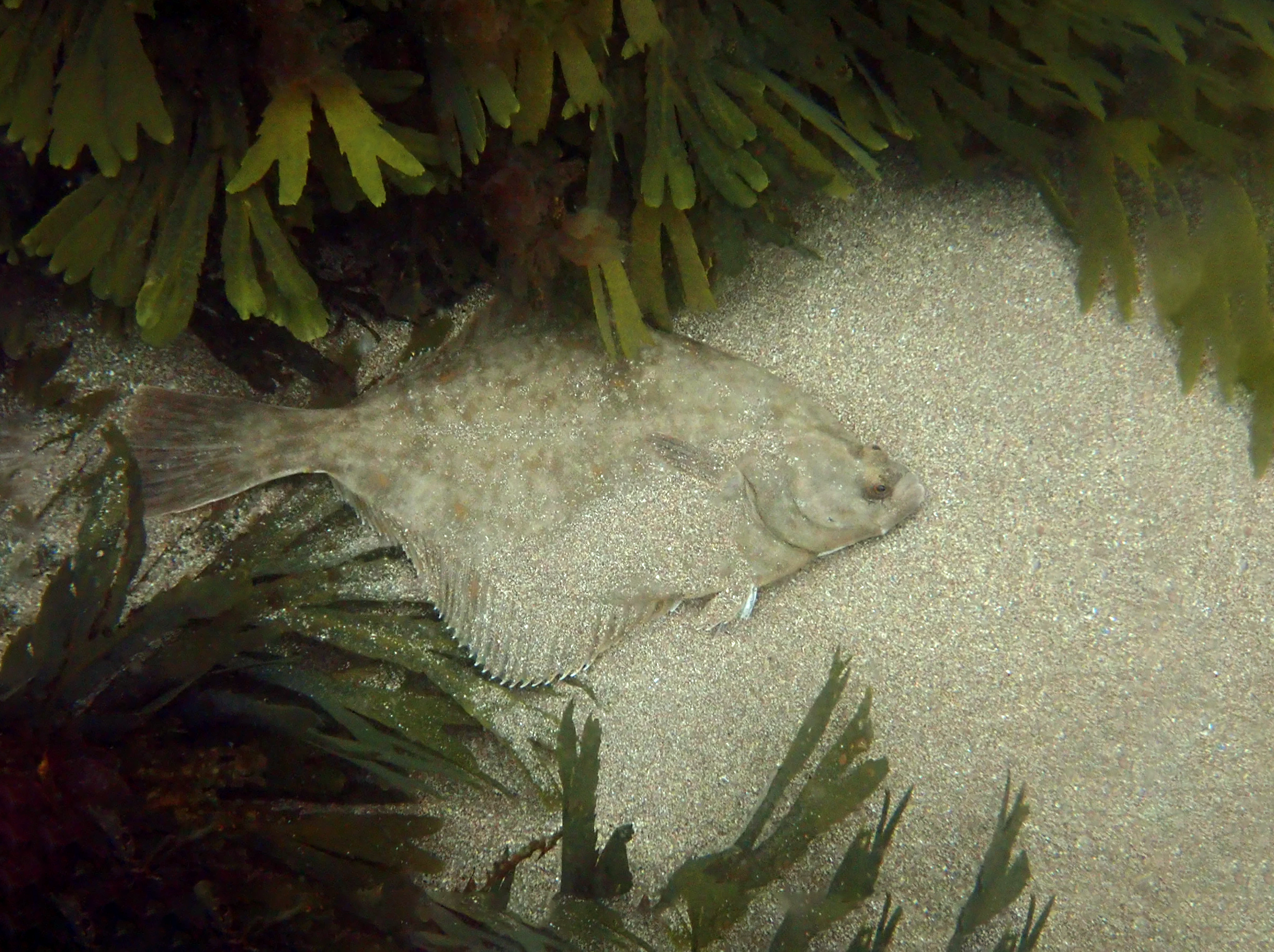
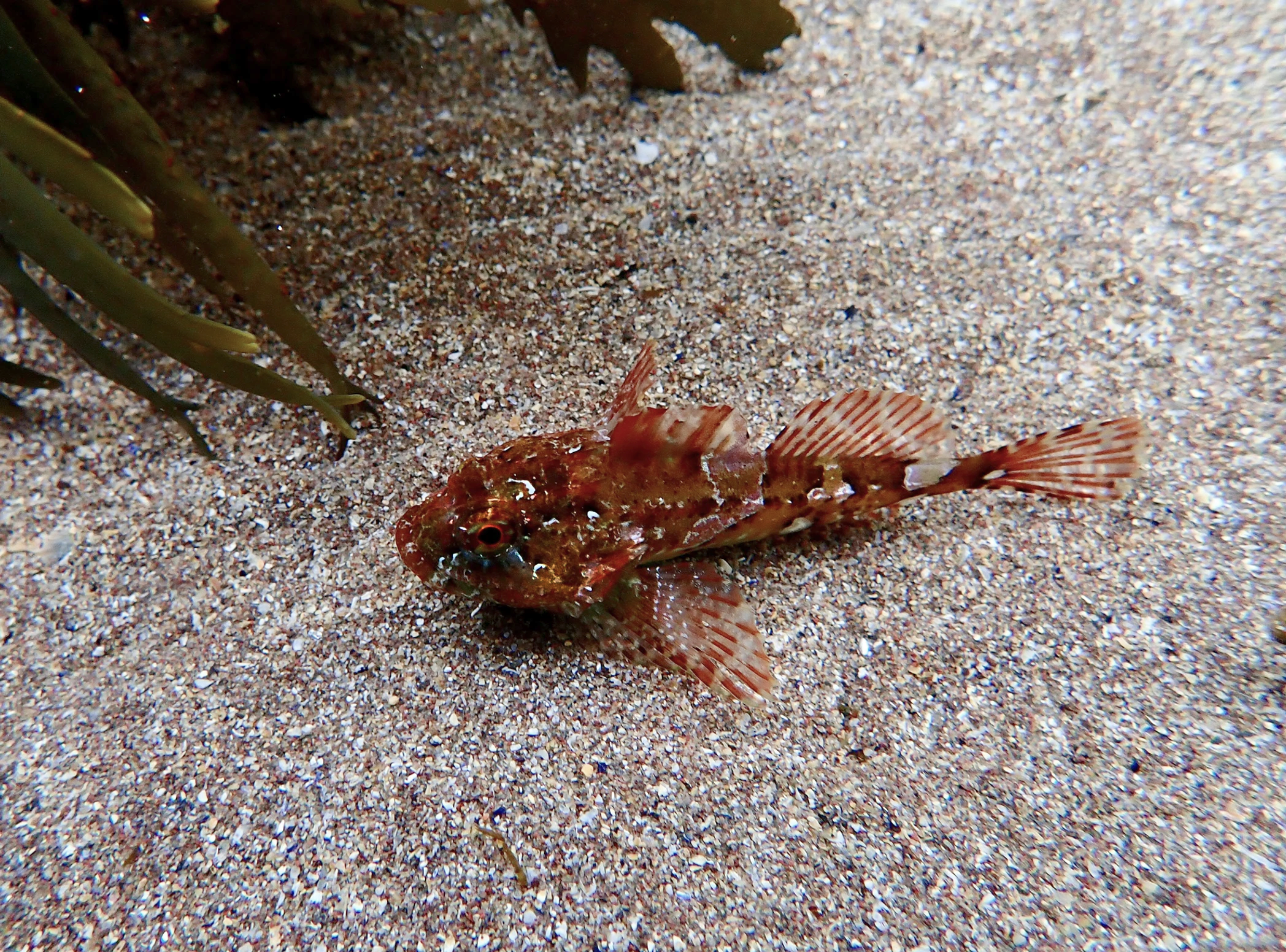
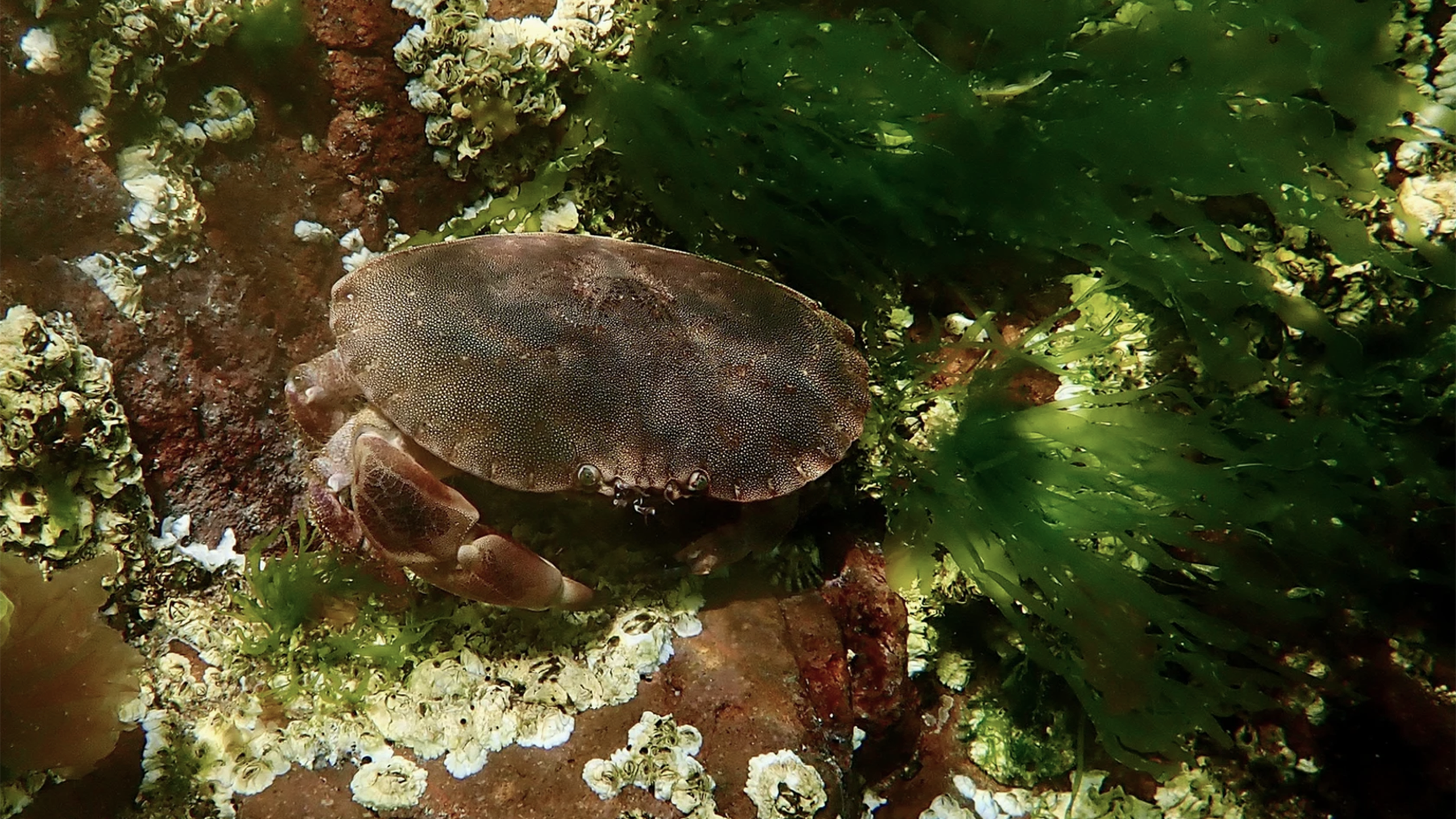


Coldingham Bay in Scotland
Coldingham Bay in Scotland

Velvet swimming crab
Velvet swimming crab

Dab
Dab

Sea scorpion
Sea scorpion

Brown crab
Brown crab

Lobster
Lobster
Best beach for
Fossil hunting
Whitby Beach, North Yorkshire
The Jurassic Coast in Dorset may be more renowned for its fossil finds, but head north to the wild North Yorkshire Coast and rich rewards await for fossil hunters, especially when the squally weather has churned things up a bit. Head to Whitby Beach with cliffs below the famous Gothic abbey where Dracula is said to have come ashore. Here you can find and crack open grey sedimentary rocks with tell-tale fault lines to expose perfect ammonites, and even glimpse dinosaur footprints in the flat rocks. As fossil expert Will Watts says: “You are the first living creature to see that ammonite for 185 million years.”
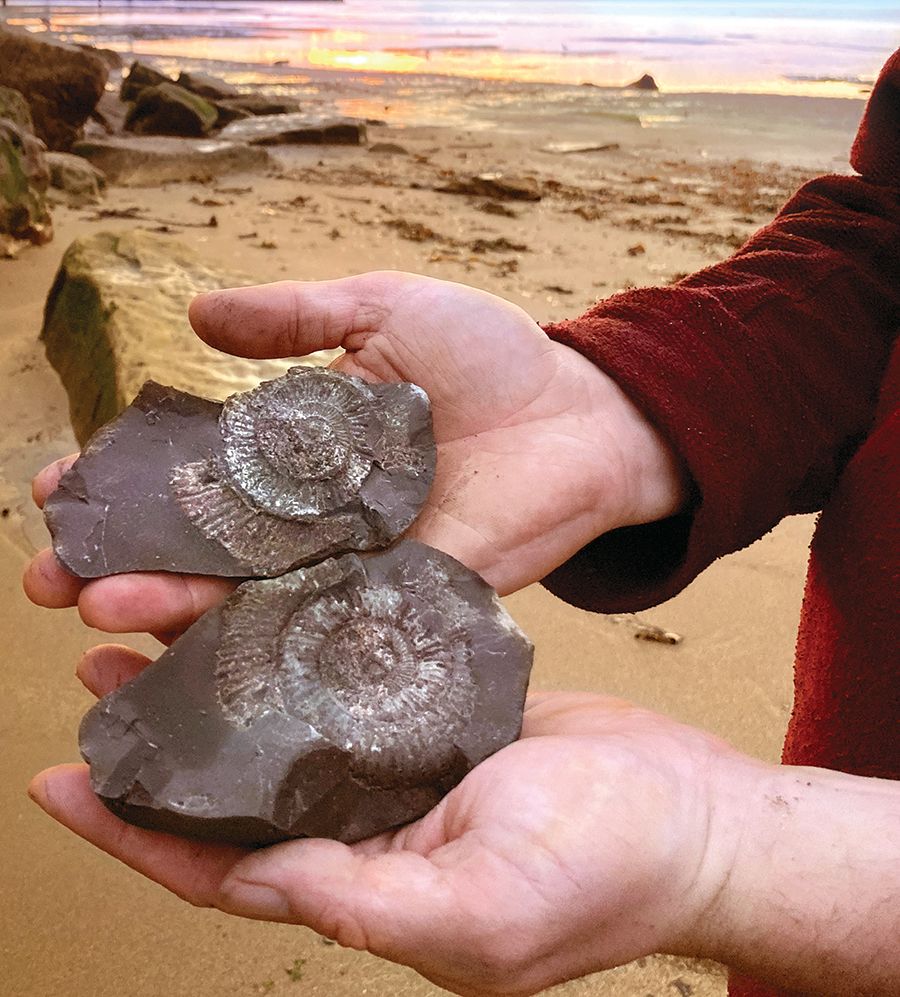
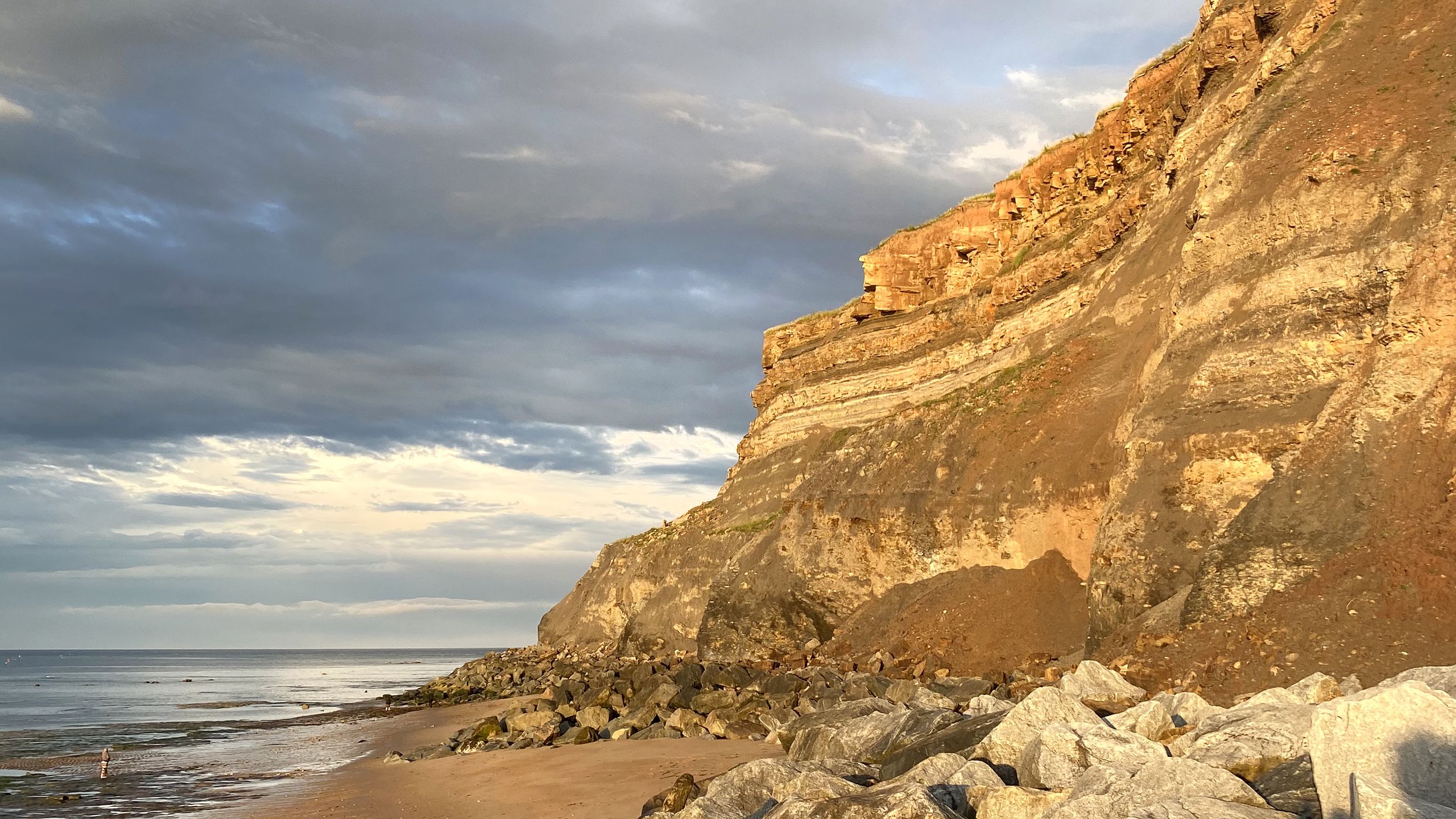
Best beach for
Rockpooling
Gyllyngvase Beach, Falmouth, Cornwall
Commonly known as Gylly Beach, this popular Blue Flag beach just a 10-minute stroll from Falmouth town centre is beloved of families. According to Seasearch Data Officer Angus Jackson, it’s one of the best places for a spot of rockpooling with three key sites at Gylly North, Gylly South and Gylly Extreme South. Montagu’s crabs are the most common find here, usually hanging out under large rocks and there are shrimps, spiny starfish, gem anemones, and more to see. If you want to explore further, head along the South West Coast Path to Swanpool Beach and Nature Reserve. For rockpool safaris, check out The Rock Pool Project.
For tips, see our rockpooling guide.
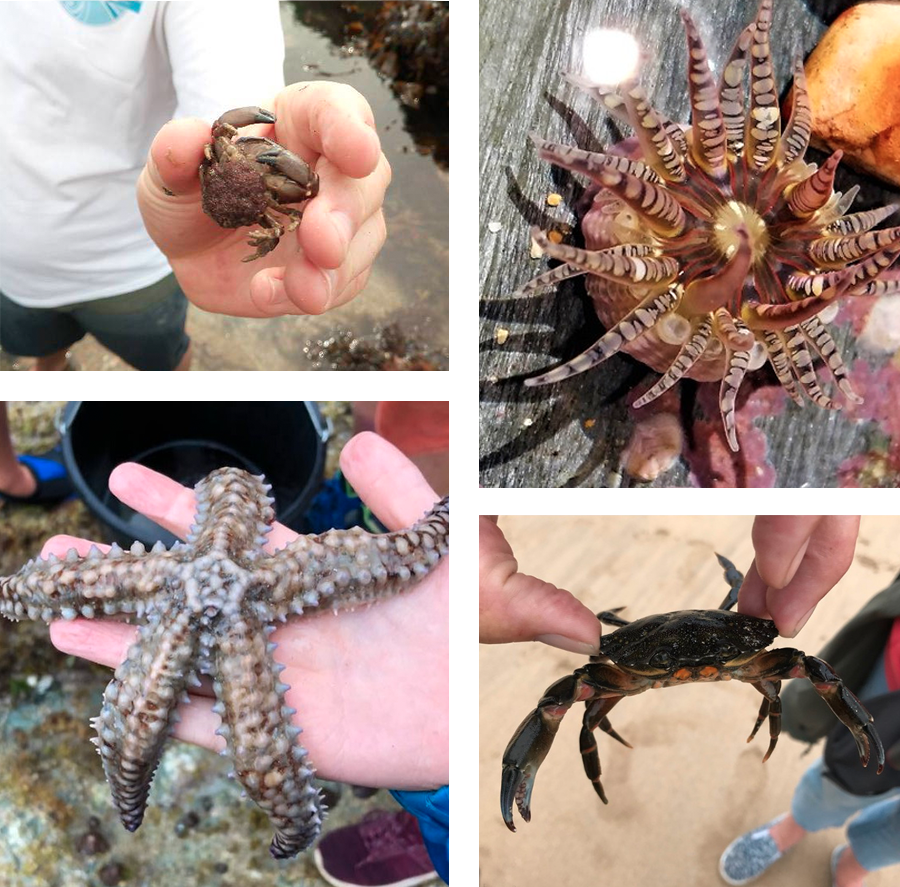
(Clockwise from top left) Rockpool finds on Gyllyngvase beach: Montagu’s crab, gem anemone, common shore crab and spiny starfish
(Clockwise from top left) Rockpool finds on Gyllyngvase beach: Montagu’s crab, gem anemone, common shore crab and spiny starfish
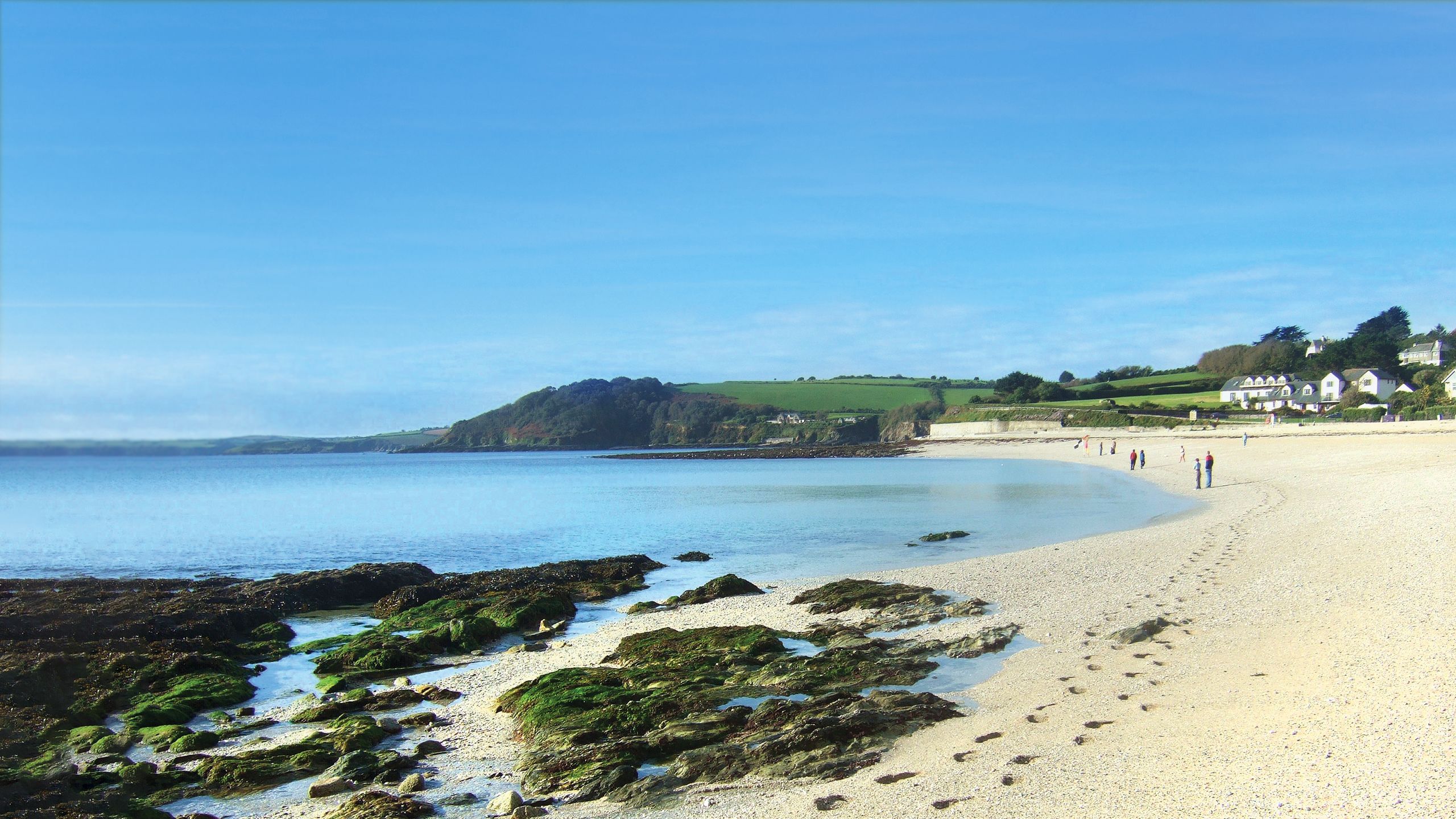
Best beach for
Rockpooling
Gyllyngvase Beach, Falmouth, Cornwall
Commonly known as Gylly Beach, this popular Blue Flag beach just a 10-minute stroll from Falmouth town centre is beloved of families. According to Seasearch Data Officer Angus Jackson, it’s one of the best places for a spot of rockpooling with three key sites at Gylly North, Gylly South and Gylly Extreme South. Montagu’s crabs are the most common find here, usually hanging out under large rocks and there are shrimps, spiny starfish, gem anemones, and more to see. If you want to explore further, head along the South West Coast Path to Swanpool Beach and Nature Reserve. For rockpool safaris, check out The Rock Pool Project.
For tips, see our rockpooling guide.

(Clockwise from top left) Rockpool finds on Gyllyngvase Beach: Montagu’s crab, gem anemone, common shore crab and spiny starfish
(Clockwise from top left) Rockpool finds on Gyllyngvase beach: Montagu’s crab, gem anemone, common shore crab and spiny starfish

Best beach for
Kayaking and canoeing
Gairloch Beach, Wester Ross
Gairloch Beach in the Scottish Highlands offers an idyllic setting for kayaking and canoeing enthusiasts, and also has stunning sunsets. Book a sea kayak experience to visit the glistening waters by the beach and you’ll be greeted by the majestic backdrop of the Torridon mountains. Paddle along the rugged coastline, exploring the hidden bays and sheltered inlets that dot the area. Glide through crystal-clear waters, where curious seals may pop their heads above the surface to greet you. Admire the dramatic rock formations and rugged cliffs that line the shoreline, providing a sense of adventure and awe. There are a variety of routes, catering to both novice and experienced paddlers.
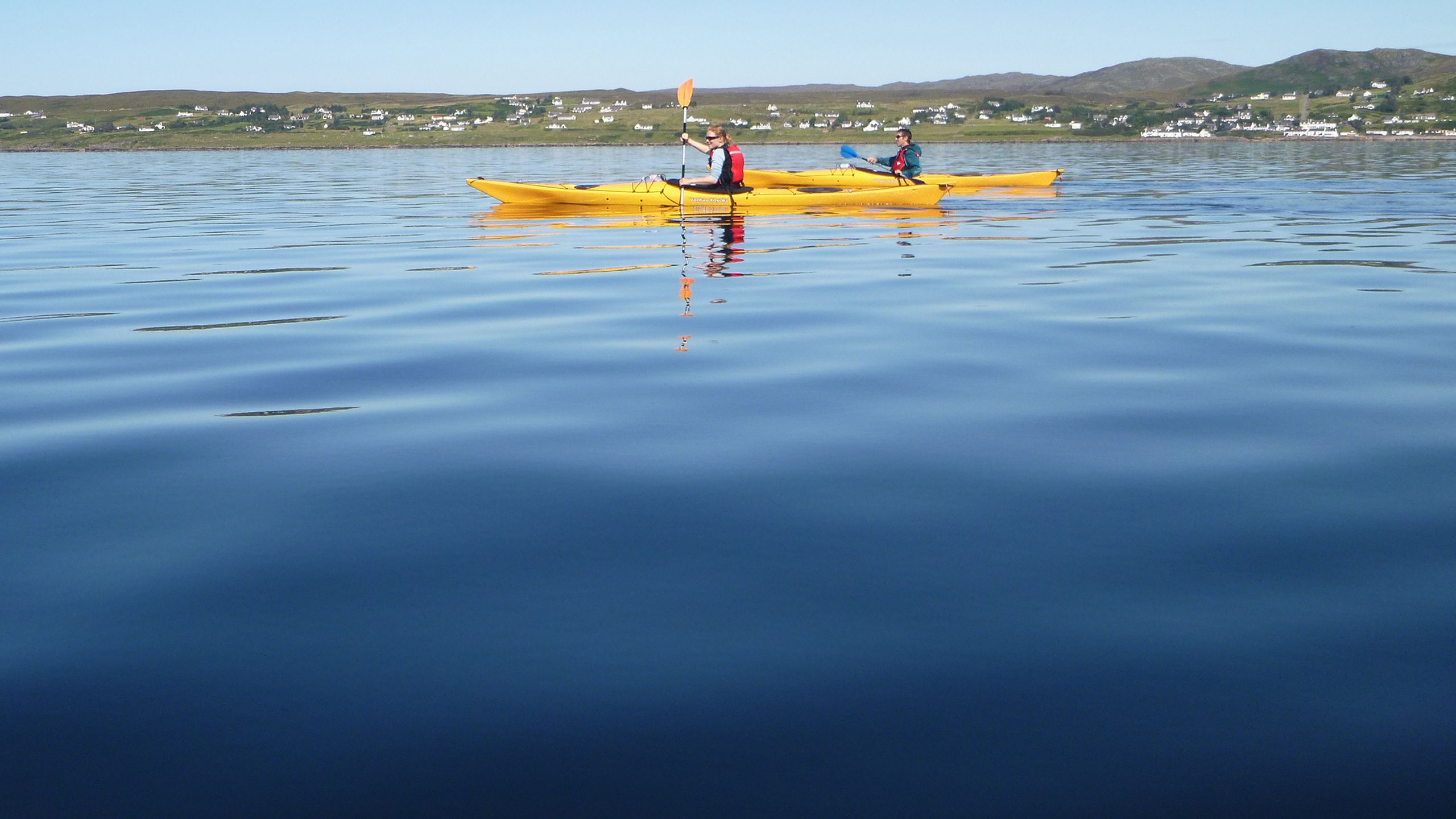
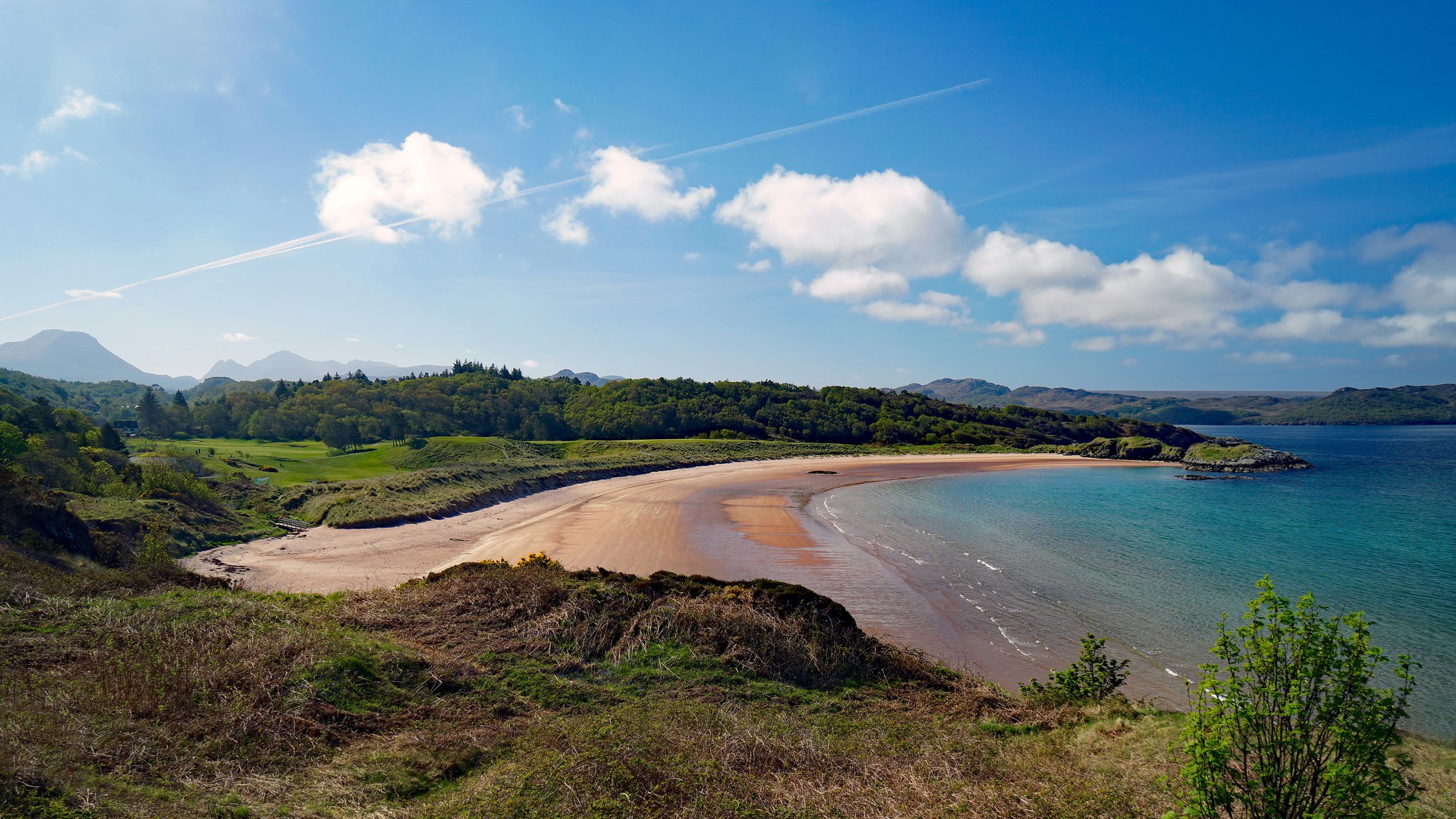
Best beach for
Kayaking and canoeing
Gairloch Beach, Wester Ross
Gairloch Beach in the Scottish Highlands offers an idyllic setting for kayaking and canoeing enthusiasts, and also has stunning sunsets. Book a sea kayak experience to visit the glistening waters by the beach and you’ll be greeted by the majestic backdrop of the Torridon mountains. Paddle along the rugged coastline, exploring the hidden bays and sheltered inlets that dot the area. Glide through crystal-clear waters, where curious seals may pop their heads above the surface to greet you. Admire the dramatic rock formations and rugged cliffs that line the shoreline, providing a sense of adventure and awe. There are a variety of routes, catering to both novice and experienced paddlers.



Best beach for
Dog walking
Traeth Lligwy, Ynys Mon, Anglesey
Marine Conservation Society Sea Champion Craig Brown says: “It’s a well-known beach, and I’m so lucky to live a mile away. It’s also a beach that doesn’t ban dogs during the summer season. It’s a great mix of sandy shore and rockpools, with views across Ynys Mon to Yr Wyddfa.”
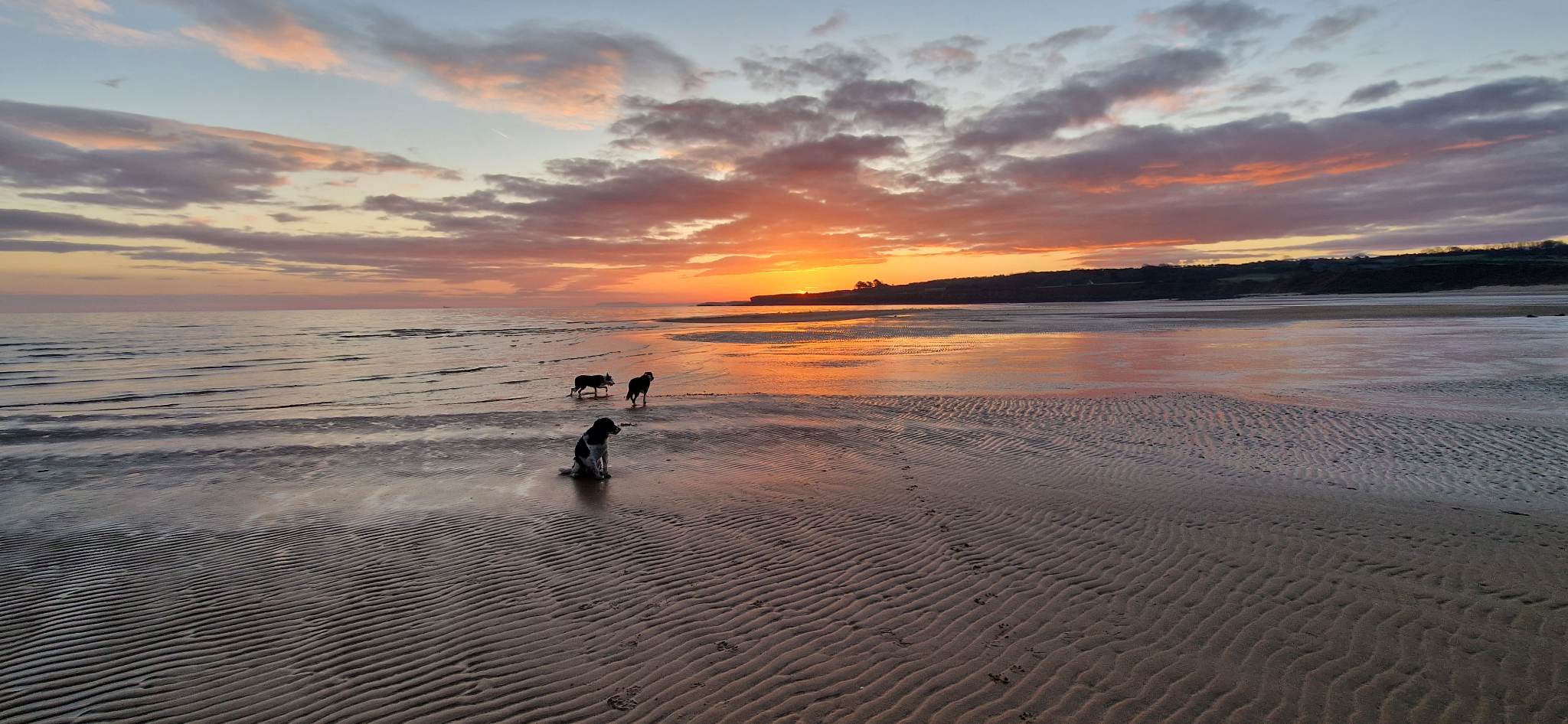
Traeth Lligwy is stunning at sunset
Traeth Lligwy is stunning at sunset
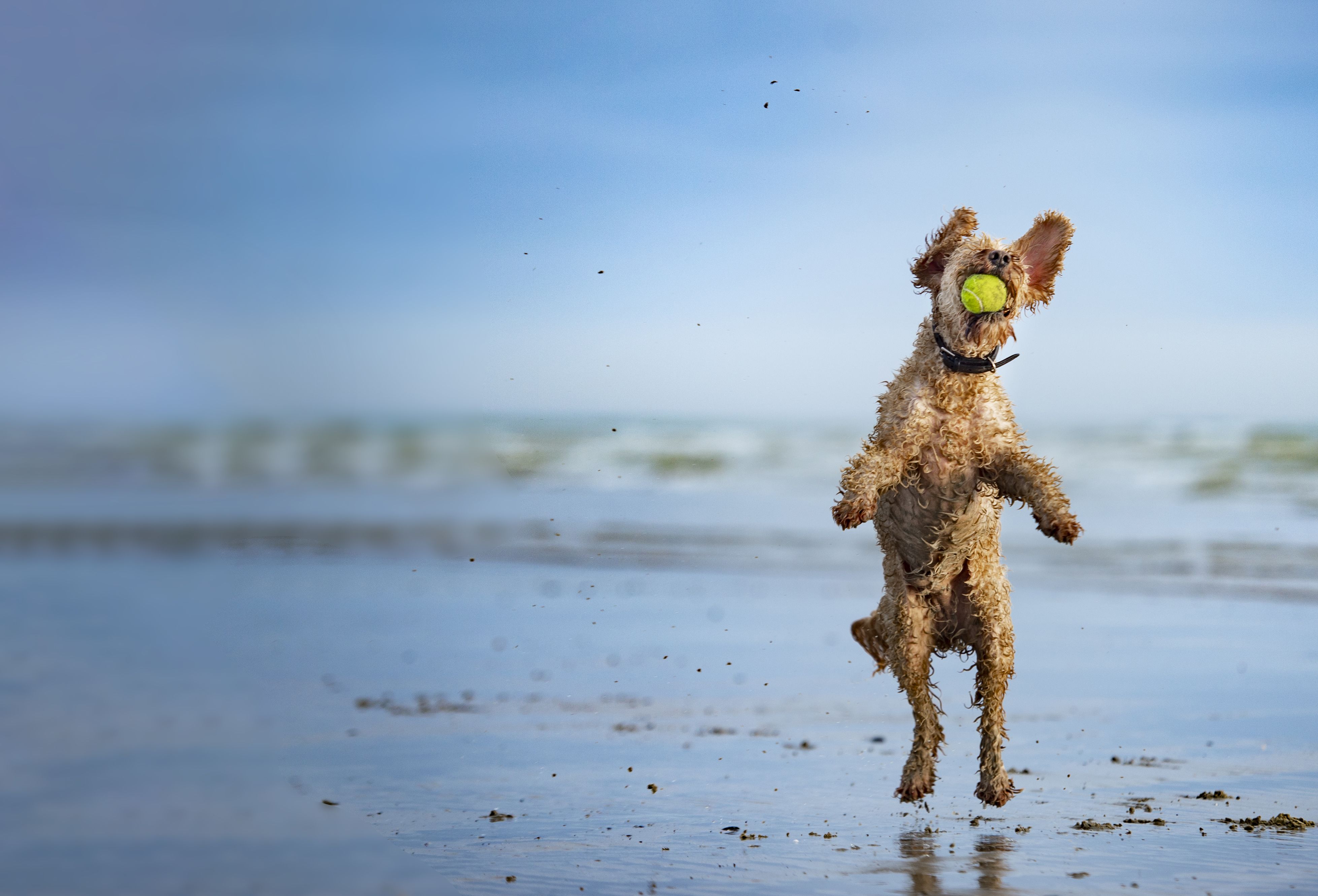

Best beach for
Dog walking
Traeth Lligwy, Ynys Mon, Anglesey
Marine Conservation Society Sea Champion Craig Brown says: “It’s a well-known beach, and I’m so lucky to live a mile away. It’s also a beach that doesn’t ban dogs during the summer season. It’s a great mix of sandy shore and rockpools, with views across Ynys Mon to Yr Wyddfa.”

Traeth Lligwy is stunning at sunset
Traeth Lligwy is stunning at sunset

Best beach for
Cuckmere Haven & Seven Sisters Cliffs, East Sussex
It may be that you get a familiar feeling when you see the old coastguard cottages at Cuckmere Haven, the arc of beach and mighty white Seven Sisters Cliffs stretching out beyond to the famous Beachy Head. This scenic stretch of Sussex coast is one of the most photographed in Britain and has starred in many films from Harry Potter and the Goblet of Fire to Atonement. Share your own photos and reels on Instagram and tag us using @mcs_uk.
You can also canoe or stand up paddleboard down the oxbows of the Cuckmere River that meander to the coast here, or explore the rockpools of Hope Gap Beach beneath the mighty cliffs.


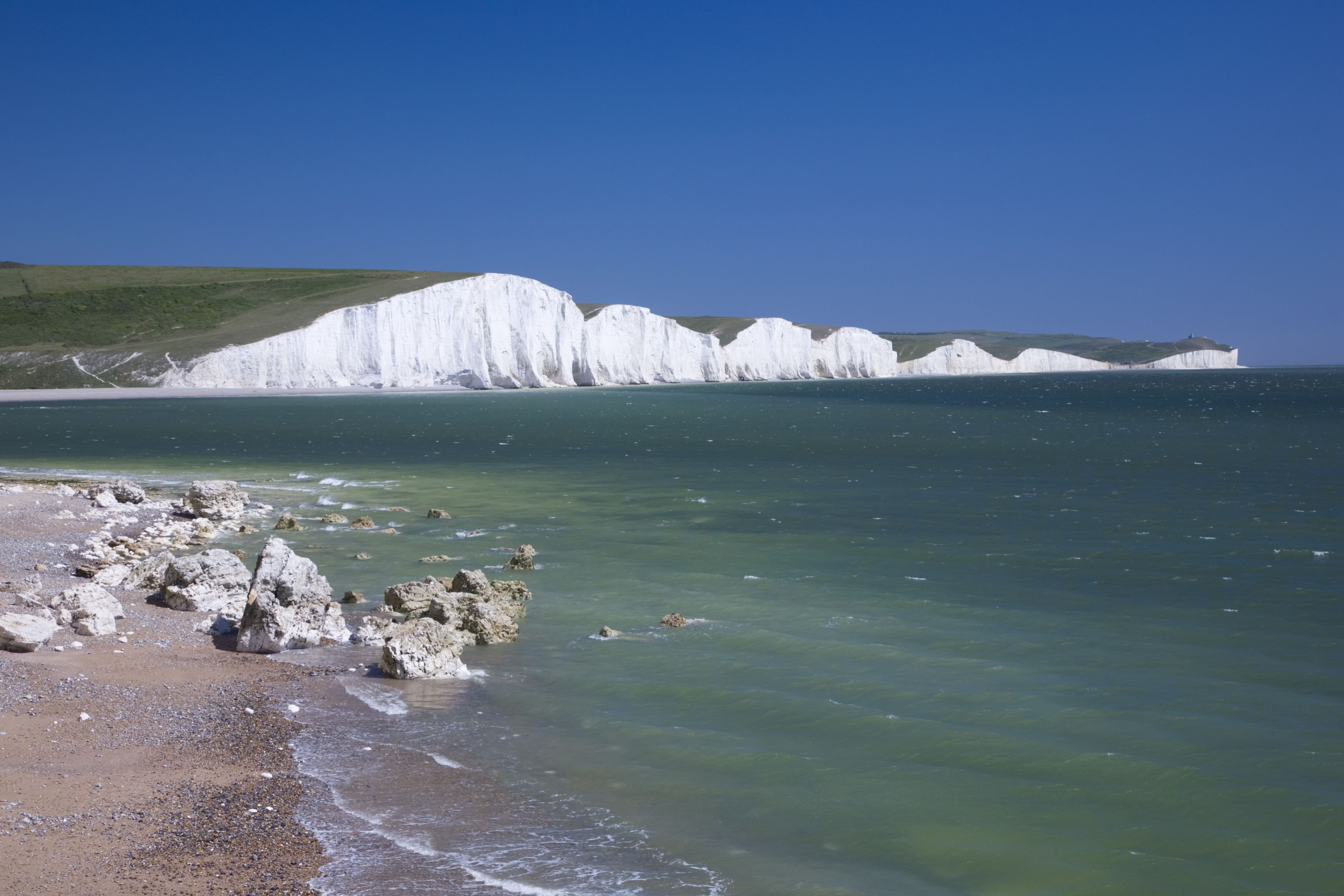
Best beach for
Cuckmere Haven & Seven Sisters Cliffs, East Sussex
It may be that you get a familiar feeling when you see the old coastguard cottages at Cuckmere Haven, the arc of beach and mighty white Seven Sisters Cliffs stretching out beyond to the famous Beachy Head. This scenic stretch of Sussex coast is one of the most photographed in Britain and has starred in many films from Harry Potter and the Goblet of Fire to Atonement. Share your own photos and reels on Instagram and tag us using @mcs_uk.
You can also canoe or stand up paddleboard down the oxbows of the Cuckmere River that meander to the coast here, or explore the rockpools of Hope Gap Beach beneath the mighty cliffs.
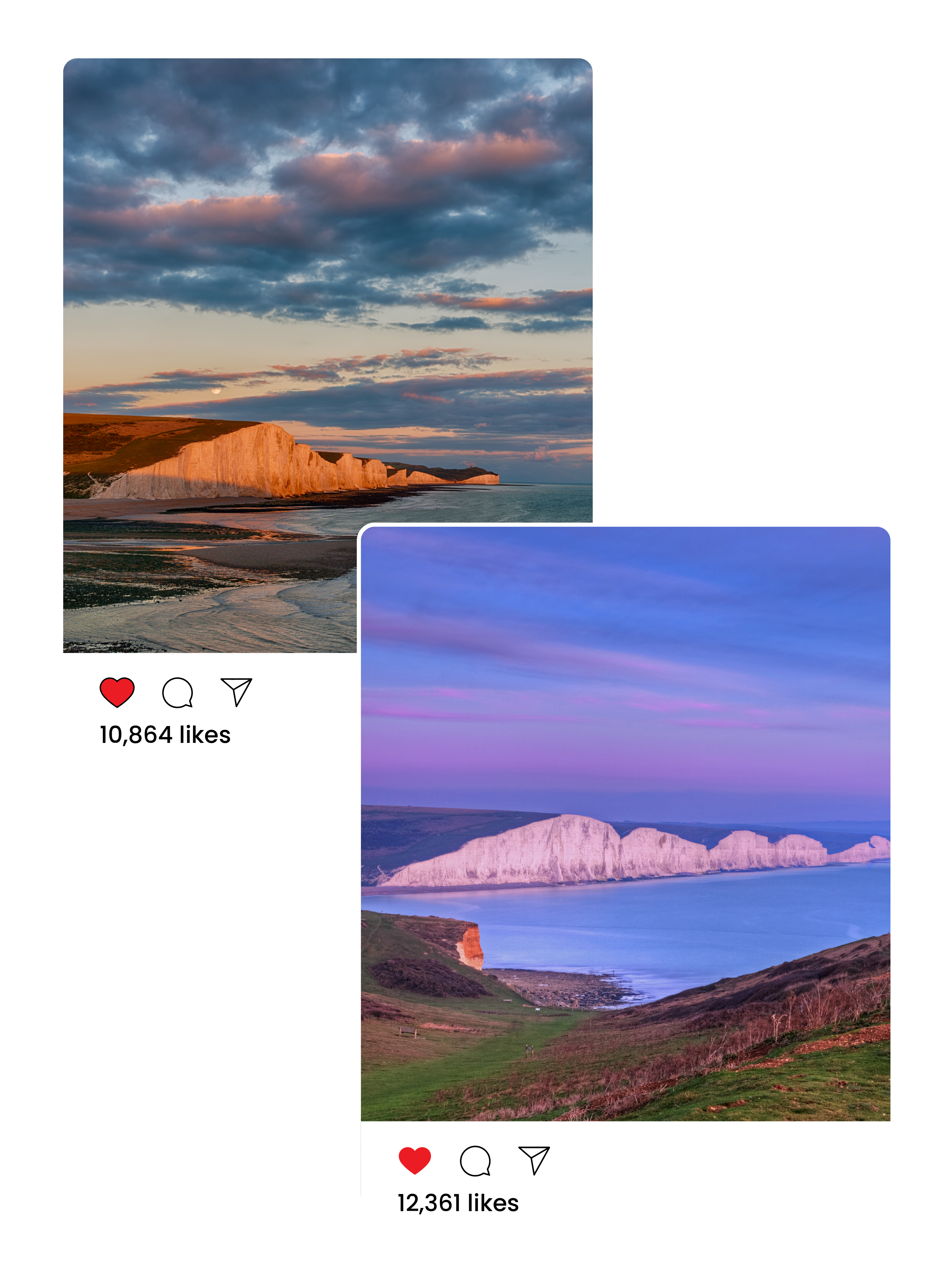

Best beach for
Spotting puffins and seals
Skomer Island, Pembrokeshire
Every child’s favourite seabird – the dapper little puffin – arrives to breed in its thousands on Skomer Island in early April. They take up residence in their nesting burrows, rear their chicks, then leave again in August. With its rugged cliffs, sheltered bays and diverse birdlife including razorbills, guillemots, oystercatchers and Manx shearwaters, Skomer Island is a top spot for nature lovers. Grey seals are also seen here all year, with pups on the beaches in September. Take the boat from Martin’s Haven on the Dale Peninsula with views across St Bride’s Bay and you’ll be greeted by volunteers to point you in the right direction.
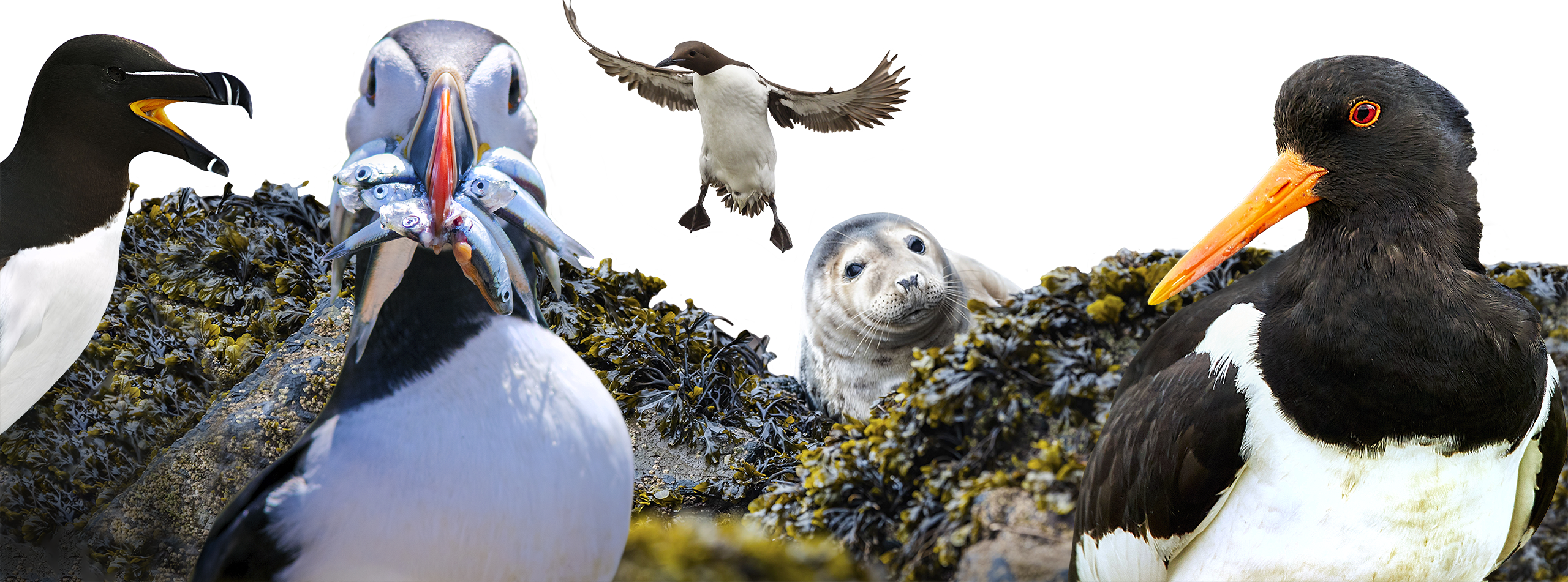
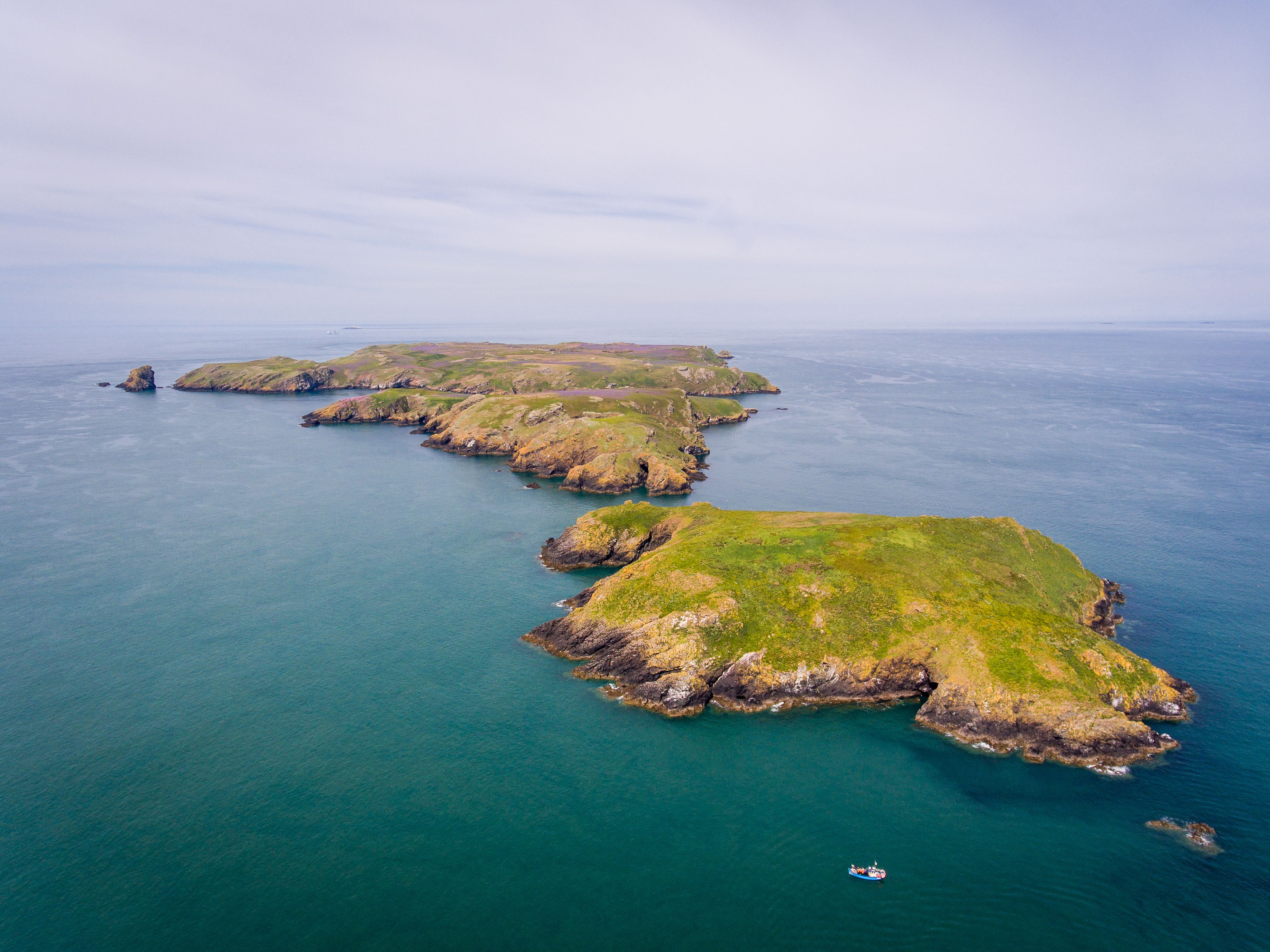
Best beach for
Spotting puffins and seals
Skomer Island, Pembrokeshire
Every child’s favourite seabird – the dapper little puffin – arrives to breed in its thousands on Skomer Island in early April. They take up residence in their nesting burrows, rear their chicks, then leave again in August. With its rugged cliffs, sheltered bays and diverse birdlife including razorbills, guillemots, oystercatchers and Manx shearwaters, Skomer Island is a top spot for nature lovers. Grey seals are also seen here all year, with pups on the beaches in September. Take the boat from Martin’s Haven on the Dale Peninsula with views across St Bride’s Bay and you’ll be greeted by volunteers to point you in the right direction.


Best beach for
Sand dunes
Saunton Sands & Braunton Burrows, North Devon
Sand dunes are undulating mounds that have formed when sand blown from the beach begins to stabilise. Incredibly, if conditions are right, the mounds can grow to heights of 100m. Braunton Burrows is one of the most dynamic dunescapes in the British Isles, backing up to the vast and wild Saunton Sands, beloved of kite surfers and walkers.
Part of the North Devon UNESCO Biosphere Reserve, these delicate dunes are home to 500 varieties of wildflowers, though there is work to remove invasive species such as Japanese rose and sea buckthorn. The dunes played a vital role during the Second World War as a training ground for US soldiers preparing for the D-Day landings and remaining relics are protected as part of its heritage.

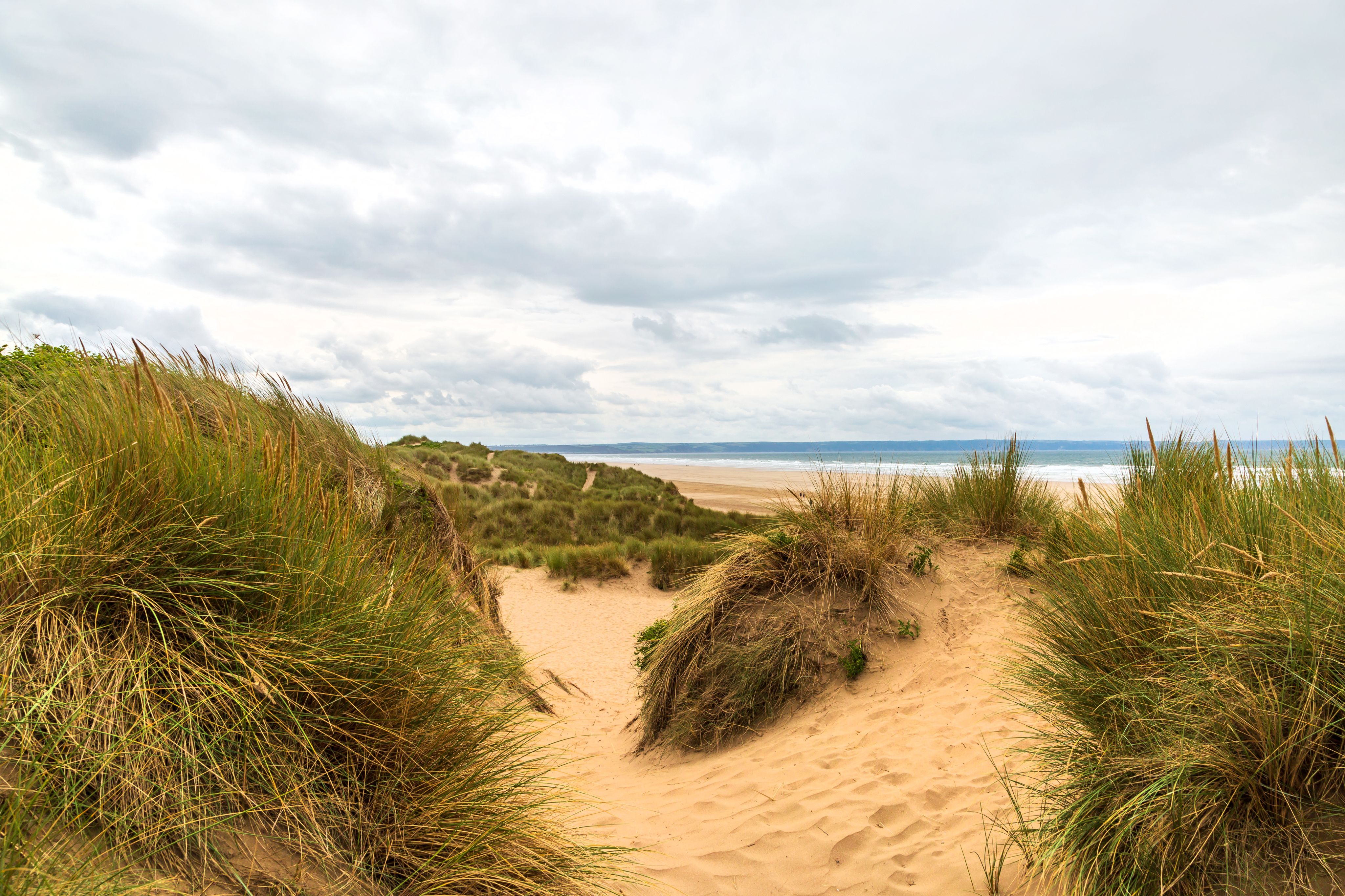
Best beach for
Sand dunes
Saunton Sands & Braunton Burrows, North Devon
Sand dunes are undulating mounds that have formed when sand blown from the beach begins to stabilise. Incredibly, if conditions are right, the mounds can grow to heights of 100m. Braunton Burrows is one of the most dynamic dunescapes in the British Isles, backing up to the vast and wild Saunton Sands, beloved of kite surfers and walkers.
Part of the North Devon UNESCO Biosphere Reserve, these delicate dunes are home to 500 varieties of wildflowers, though there is work to remove invasive species such as Japanese rose and sea buckthorn. The dunes played a vital role during the Second World War as a training ground for US soldiers preparing for the D-Day landings and remaining relics are protected as part of its heritage.


Your Ocean stories
We’re fighting for a cleaner, better-protected, healthier ocean: one we can all enjoy. Thank you for your support.
Credits
Photos: Natasha Ewins; Genine Keogh/snorkelwild.com (snorkelling images); Jane Anderson; Ben Holt, Susie Matthews; Jade/therockpoolproject.co.uk; Highland Experiences Ltd (kayaking image); Craig Brown; Heather Leslie Ross, Matthias Czerson/500px, Rhian White/Moment RF, David C Tomlinson, Martin Ruegner, Aubrey Stoll, Coldsnowstorm, Steved_np3, Lemanieh/iStockphoto, Enrique Aguirre Aves, Stephan Rech/Westend61, WLDavies, Matthew Williams-Ellis/Collection Mix: Subjects RF/Getty Images
